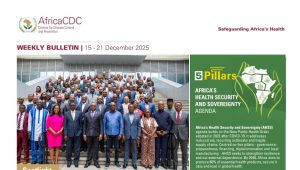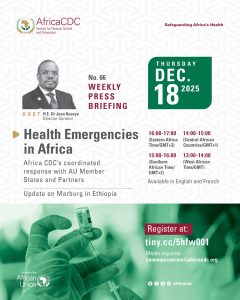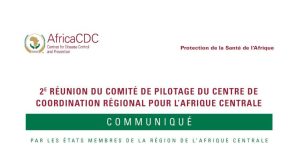Cholera hotspots are set to be identified in five African countries this year to guide the development of a roadmap for prevention, control, and elimination of this infectious disease that remains aggressive and prolonged in multiple countries in Africa.
According to UNICEF, over 178,000 cases of cholera have been confirmed in 16 countries in Eastern and Southern Africa from January 2024 until March 2025.
“This suggests that we need to identify areas of cholera concentration and, importantly, the different spheres contributing to its spread,” said Dr Isaac Choge, Senior Technical Officer at Africa CDC in the Emergency Preparedness and Response Division.
Cholera can be fatal and is a bacterial disease usually spread through contaminated water. Although all people can be infected, recent trends suggest that people concentrated near international borders and internationally shared lakes and rivers have become of interest because of their mobility patterns.
Backed by resources made available through the World Health Organization (WHO) and the Global Task Force on Cholera Control (GTFCC), support is set for the third quarter of 2025 for cholera control in Uganda, South Sudan, Zimbabwe, Tanzania, and Ghana, and for elimination in Rwanda, where insufficient identification of high areas of cholera concentration is hindering efforts to bring the disease under control.
The support being offered to these countries includes identification of cholera-prone areas and capacity development to harness country-level and regional platforms to control and eliminate cholera. This is in direct support of the Africa Centres for Disease Control and Prevention (Africa CDC) vision and mission.
“This strategic support will give the required kick-start to National Cholera Plans through specific identification of hotspot areas and requisite action plans. This will only be the start, with more Priority Areas for Multisectoral Interventions (PAMIs) support to an expanded pool of countries in the 2026 year,” said Dr Choge.
The selection of countries was based on immediate need, push from the Member States, and disease burden. “We envision that all Member States will have their PAMIs done in the near future, as this is the intention of Africa CDC,” he said.
The plan was released during the second Public Health Emergency Management (PHEM) seminar focusing on PAMIs for cholera control in support of Member States, held from 18 to 19 March 2025 by the Africa CDC in Addis Ababa.
In line with the Global Roadmap for Ending Cholera by 2030, developed by the Global Task Force for Cholera Control and emphasising the need for targeted multisectoral interventions in priority areas, multiple stakeholders have been meeting to end perennial cholera outbreaks on the African continent.
Africa CDC, the European Centre for Disease Prevention and Control (ECDC), and the World Health Organization for the African Region (WHO AFRO) have teamed up to provide expertise in the field.
The inception PAMIs support meeting was attended by selected technical leaders from the Central, Eastern, Southern, and Western Regional Coordinating Centres (RCCs) in the Emergency Preparedness and Response teams for the identification of PAMIs across the continent.
Training EPR technical leaders is a crucial step aimed at the development and maximisation of the impact of national control and elimination plans for cholera, said Dr Fred Kapaya, a cholera expert from WHO AFRO who facilitated the training.
The objective of the workshop was to increase the pool of experts on PAMIs who can be utilised as Trainers of Trainers to cascade training at Member State level, strengthen collaboration, and contribute to efforts to eliminate cholera by 2030, he said.
“We intend to have savings through prevention rather than responding to cholera outbreaks by holistically supporting health programmes in communities in the affected Member States, outside direct healthcare,” said Dr Choge.







